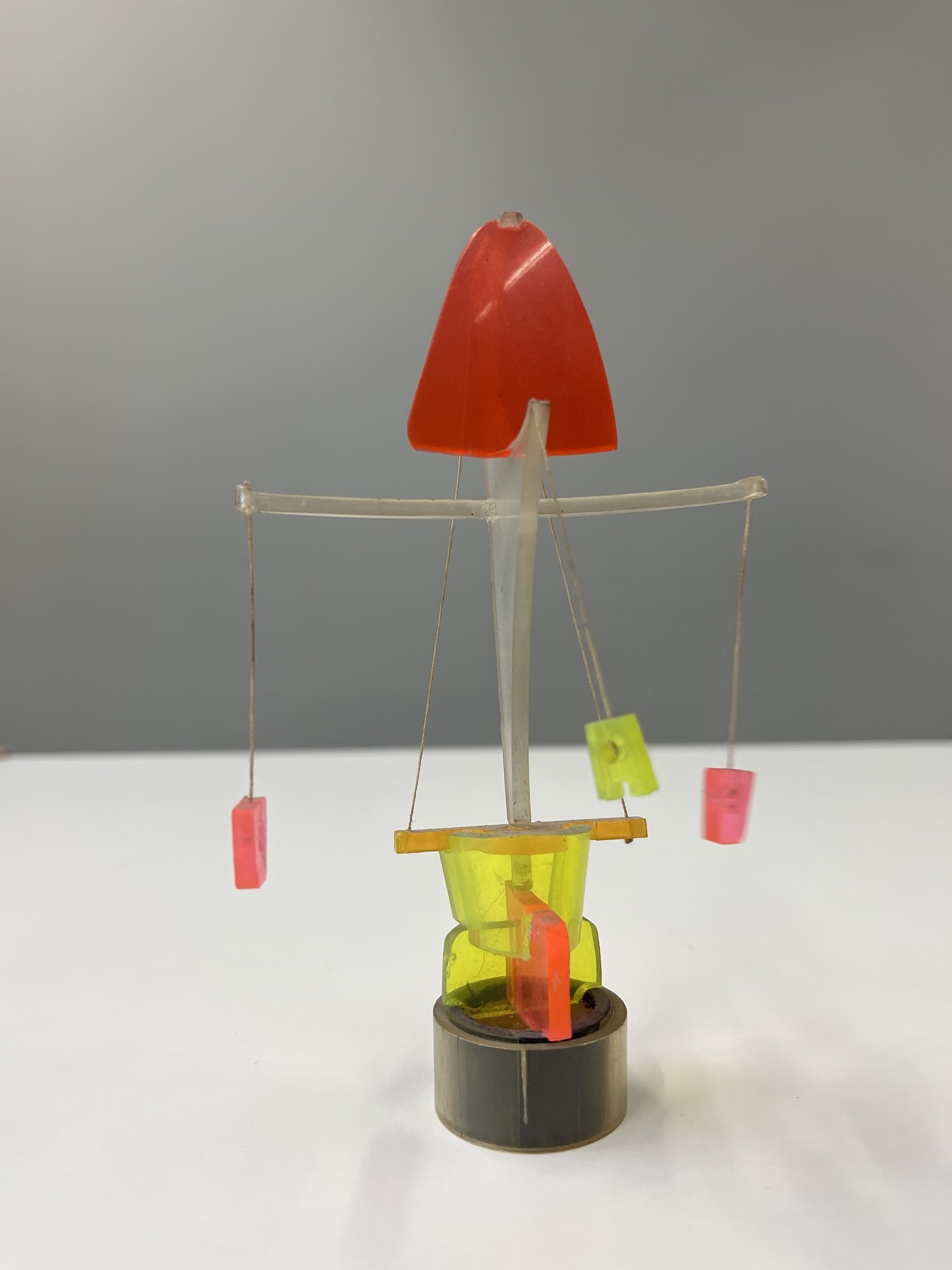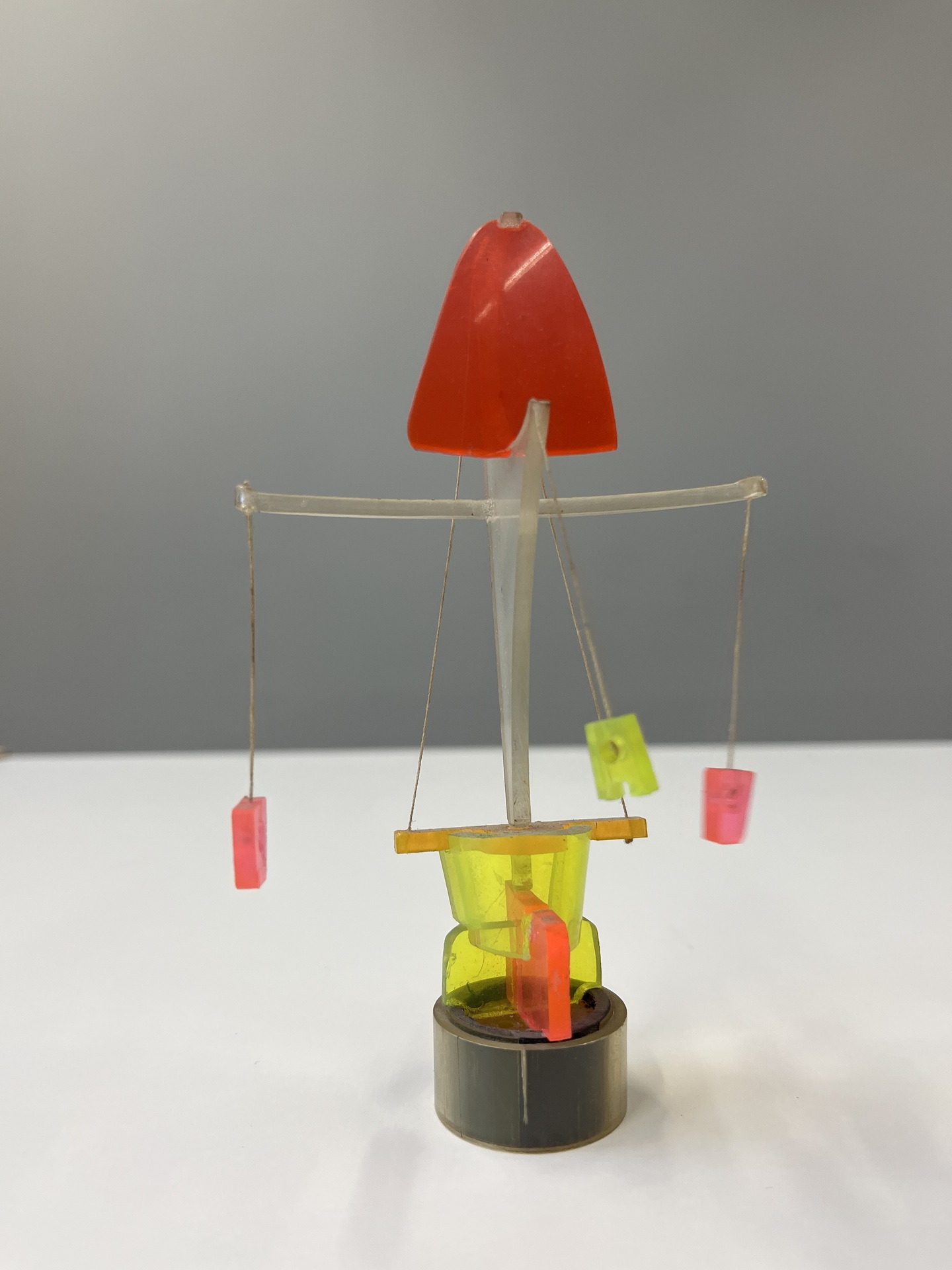Figuren für den Tanz im Labyrinth
1958
- Title
- Figuren für den Tanz im Labyrinth
- Year
- 1958
- Medium / Material / Technic
- Acrylic glass, magnet, cotton
Between 1958 and 1965, the Austrian computer pioneer Heinz Zemanek had the most famous objects of cybernetics reconstructed at the Institute for Low Frequency Technology of the Vienna University of Technology. Among them was the legendary labyrinth of Claude E. Shannon, which he had developed around 1950 at Bell Research Laboratories under the project name »Theseus«. The maze with the mechanical mouse was an early example of the possibilities of machine learning. The mouse, which “learned” by trial and error, was moved by an electromagnet located under the metal floor of the maze. In the Vienna reconstruction, a simple method was used to communicate to the control computer that a path was blocked: if the mouse bounced against one of the walls, contact between the mouse and the magnet was briefly interrupted. The goal of reconstructing Shannon’s machine was to develop a program in which the mouse could discover the shortest path through the maze as quickly as possible, in an analogy to a learning process.
The artist Otto Beckmann, who had been cooperating with the Institute of Low Frequency Technology since 1966, was inspired by Richard Eier’s labyrinth. Around 1971, Beckmann developed the idea of letting the mouse run through a “lexical” labyrinth filled with words, thus generating poems. In addition, the artist used the labyrinth to continue working on a concept which he had developed in the 1960s in connection with his animated films: the idea of a choreography created with the help of computer technology. The photos from 1972 show attempts to make acrylic figures dance through the labyrinth.

